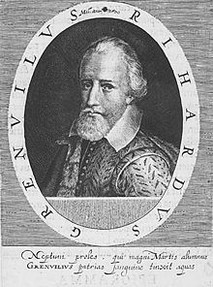 Repairs to the Tiger meant a short delay before undertaking the final leg of the journey to Roanoke Island.
Repairs to the Tiger meant a short delay before undertaking the final leg of the journey to Roanoke Island.
Sir Richard Grenville (pictured) and his fellow captains passed the time exploring the coastal settlements and meeting local tribes. Manteo and Thomas Harriot were invaluable as interpreters, but Wanchese was still highly suspicious.
It was with good reason. During one of the introductions, the native village of Aquascogoc were less than receptive to meeting English buccaneers and colonists. They refused point blank to welcome them.
Very quickly, Grenville claimed that a silver drinking cup had gone missing, and he accused the Aquascogoc of stealing it. Retribution was swift and genocidal. English soldiers surrounded the settlement and burned it to the ground. Every man, woman and child within it was killed.
That 'incident' sent a powerful message across all of the vicinity. The local tribes learned from the onset that denying the English would mean brutal violence. It pretty much set the stage for the next four hundred years of interaction.
Finally the Tiger was fixed and the fleet could finish their journey. They arrived on Roanoke Island on August 17th 1585 and built a fort. Unfortunately for them, it was desperately apparent that they hadn't got the supplies nor manpower to successfully establish their colony. Nevertheless, their new governor, Ralph Lane, was willing to give it a try.
Grenville promised to return in April 1586 with both, then took his ships off to do some more privateering before going home to England. Manteo also reassured the abandoned first Roanoke Colonists. He nipped home to his Croatan people and fetched enough food to see the English through the winter.
Wanchese also stayed, but only until April 1586. As soon as it became apparent that Grenville wasn't coming back, the Roanoke chief returned to his own tribe. No doubt he also carried a wealth of intelligence about these violent Europeans.
Very soon afterwards, a group of native warriors attacked the fort. Against all odds, the English managed to repel them, but it had left them very shaken.
They were just highly relieved to be visited by Sir Francis Drake. Another British pirate, he had been off plundering and pillaging in the Caribbean in spring 1586. When he popped by to see how his countrymen and women were getting on, he found them desperate to get out of there.
The first Roanoke Colony was abandoned and returned home with Drake. They took with them tobacco, potatoes and maize to be introduced into Europe.
A few days later, Grenville finally did return. He learned from Manteo what had happened, none of which boded well for an English claim in the New World. Selecting fifteen of his most experienced and hardy men, he left them at the fort to maintain that claim. The rest sailed back home with him for further instructions.



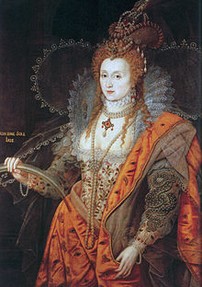 In 1584, the Elizabethan court in England was worried. With the French colonizing Canada and the Spanish and Portuguese taking over South America, the opportunity for a British presence in the New World was narrowing.
In 1584, the Elizabethan court in England was worried. With the French colonizing Canada and the Spanish and Portuguese taking over South America, the opportunity for a British presence in the New World was narrowing.


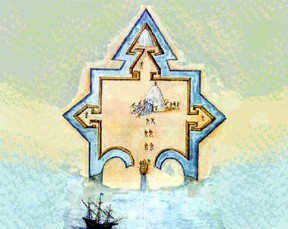 Loaded with provisions, people and intelligence about the area, five ships left Plymouth Harbour in 1585. It took them twenty-one days to cross the Atlantic Ocean.
Loaded with provisions, people and intelligence about the area, five ships left Plymouth Harbour in 1585. It took them twenty-one days to cross the Atlantic Ocean.


 Repairs to the Tiger meant a short delay before undertaking the final leg of the journey to Roanoke Island.
Repairs to the Tiger meant a short delay before undertaking the final leg of the journey to Roanoke Island.


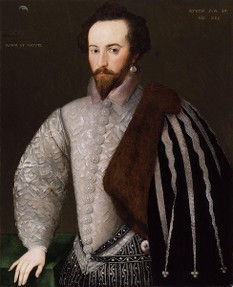 Queen Elizabeth I wasn't exactly ecstatic about the failure of Raleigh's Roanoke Colony. She threatened life and limb, if he didn't stay good to his word and charter and get more people over there, fast.
Queen Elizabeth I wasn't exactly ecstatic about the failure of Raleigh's Roanoke Colony. She threatened life and limb, if he didn't stay good to his word and charter and get more people over there, fast.


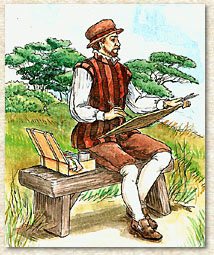 Chesapeake Bay might have been a better prospect, but without Fernandez's co-operation, they were stuck on Roanoke Island.
Chesapeake Bay might have been a better prospect, but without Fernandez's co-operation, they were stuck on Roanoke Island. 



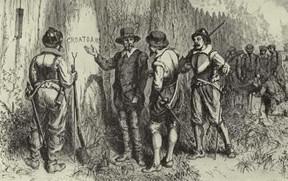 While White and his colonists had been arriving in the New World, King Philip II of Spain had achieved a Papal dispensation to overthrow the Protestant Queen of England.
While White and his colonists had been arriving in the New World, King Philip II of Spain had achieved a Papal dispensation to overthrow the Protestant Queen of England.





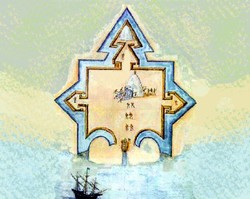

 St Tydecho's Churches in West Waleson 09/03/2014
St Tydecho's Churches in West Waleson 09/03/2014
 Goodies for an Outlander Premiere Partyon 03/06/2015
Goodies for an Outlander Premiere Partyon 03/06/2015
 Holocaust Memorial Day Interview with Rainer Höss, Grandson of Rudolf Architect of Auschwitzon 01/24/2015
Holocaust Memorial Day Interview with Rainer Höss, Grandson of Rudolf Architect of Auschwitzon 01/24/2015
 Romantic Valentine Gifts for an Outlander Fanon 01/16/2015
Romantic Valentine Gifts for an Outlander Fanon 01/16/2015

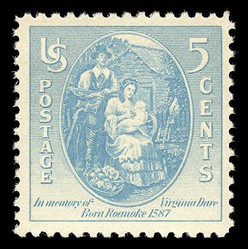
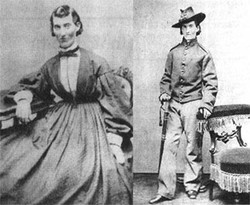
What do you think happened to the Lost Colony? Any thoughts on what led to its disappearance?
A dictator idiotship person in the beginning. Disease STD's. And idiots that believed in whomever fled these people across the seas. Kudos to the people who wanted to leave idiocy. But . well, at least we have America and Rump-Trump. Oh how wonderful.
Lana - That's another theory. They all built boats, but the boats sank.
Mira - That's one of the major theories. I also wonder if Fernandez was really as British as he made out. He could have kept them there because that's the location in which he'd already tipped off the Spanish or Portuguese.
Just wondering if they built boats, maybe they didn't make it.
If they'd been plundered, wouldn't there have been signs of the buildings left?
This was interesting. I wonder why everybody left. Maybe Spaniards came and plundered? According to what you're writing, they would have known about the colony.
That is a very good point. I have no idea, unless they built boats for themselves.
How would they have tried to get off the island?